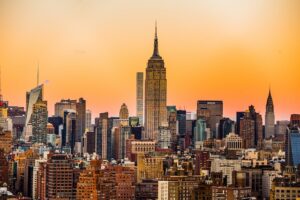In the hustle and bustle of New York, businesses operate on high-rise buildings, skyscrapers, and construction sites, each activity carrying potential risks of falls. With this, incidents and tragedies can happen due to insufficient fall protection measures. Understanding and adhering to safety regulations is not just a legal obligation but a moral one, integral to protecting the welfare of employees and safeguarding companies against substantial liabilities.
The Importance of Fall Protection and Its Relevance to Personal Injury Law
In New York alone, falls account for a significant percentage of work-related fatalities, specifically in the construction industry. In fact, nine out of 11 fatalities in 2022 were from falls. Aside from deaths, it’s also a leading cause of injury. Such can lead to substantial personal injury claims. When safety measures falter or are neglected, consequences range from costly lawsuits to tragic losses of life. These incidents underline the relevance of fall protection in personal injury law, making it a focal point for litigation and legal analysis.
Navigating the Intricacies of New York's Fall Protection Laws

Understanding the legal landscape of fall protection in New York is a complex, yet vital endeavor. Key pieces of legislation form the bedrock of the state's safety protocols for employees working at height. By grasping these regulations, employers can better ensure worker safety and mitigate legal risks.
New York Labor Law: Section 240
Commonly referred to as the "Scaffold Law," Section 240 of the New York Labor Law is a vital piece of legislation that mandates stringent safety measures for businesses. Distinctively rigorous compared to similar laws in other jurisdictions, this statute highlights the necessity of providing appropriate safety equipment to all employees engaged in elevated work activities, such as those in construction, demolition, or repair.
A critical element of Section 240 is the principle of vicarious liability. This principle holds that employers may be legally accountable for accidents, even if they did not have a direct role in the incident. This concept accentuates the fundamental requirement for businesses to actively implement and enforce safety protocol and invest in certified safety equipment.
This is because a lack of adherence to these stringent safety measures could have serious legal ramifications. It not only jeopardizes the safety of employees but also potentially exposes businesses to substantial legal risks, ranging from financial penalties to more serious legal consequences. Thus, an understanding of and compliance with Section 240 is non-negotiable for businesses operating in these sectors in New York.
Occupational Safety and Health Administration (OSHA) Guidelines
Beyond state-specific laws, federal guidelines also shape New York's fall protection regulations. The Occupational Safety and Health Administration (OSHA) provides exhaustive guidelines on fall protection. These standards delineate the types of fall protection systems needed for different work scenarios, along with the correct procedures for their use.
OSHA's guidelines are mandatory, and non-compliance can trigger severe penalties. Companies that violate these regulations may face substantial fines, and in the event of accidents, could be subject to lawsuits.
A central element of these safety protocols pertains to climbing ladder fall arrest system requirements. Such systems are pivotal safety devices designed to protect workers scaling vertical ladders, either by averting falls or minimizing fall impact.
The requirements for these systems in New York are meticulous, specifying the necessary design, installation, and use of these systems. For instance, OSHA's 29 CFR 1910.28 standard mandates that fixed ladders taller than 24 feet must be equipped with fall arrest systems. This standard also asserts that a worker should not free fall more than six feet or make contact with any lower level.
Industrial Code Rule 23
Industrial Code Rule 23, part of the New York Codes, Rules, and Regulations (NYCRR), provides further safety regulations for construction and demolition operations. This code offers specific safety requirements for working with scaffolding, ladders, hoists, and other equipment. For instance, Rule 23-1.21 mandates the use of safety railings and toeboards at all open sides of floor, platform, or runway areas where there's a potential falling hazard.
New York City Building Code
For companies operating within the city limits, the New York City Building Code provides additional regulations. Chapter 33 of this code ("Safeguards During Construction or Demolition") establishes stringent safety measures for worksites, including provisions for guardrails, toeboards, and personal fall arrest systems.
ANSI/ASSE Z359 Fall Protection Code
On a national level, while not a law, the American National Standards Institute (ANSI) and American Society of Safety Engineers (ASSE) Z359 Fall Protection Code are widely recognized as best practice guides for comprehensive fall protection. This extensive standard covers multiple aspects of fall protection, including systems, subsystems, components, training, and practices. Its adoption is voluntary but highly recommended to enhance safety practices.
Conclusion
Understanding and complying with fall protection regulations is not a mere formality but a vital necessity. Businesses, both large and small, should regularly update their knowledge and practices related to the legal aspects of fall protection. In doing so, they ensure the safety of their employees, fulfill their moral and legal obligations and shield themselves from potential legal disputes. The law is clear: when it comes to safety, there can be no compromise.